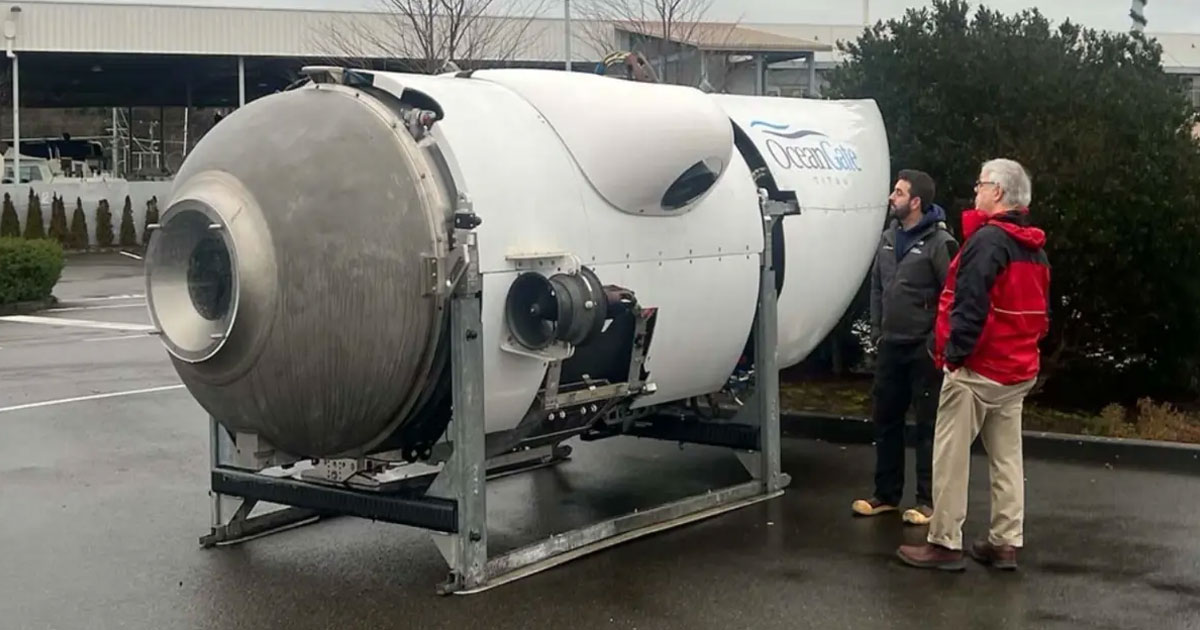New evidence strongly suggests that OceanGate’s submersible, which imploded and killed all passengers on its way to the Titanic wreck, was unfit for the journey. The CEO, Stockton Rush, bought discounted carbon fiber past its shelf life from Boeing, which experts say is a terrible choice for a deep-sea vessel. This likely played a role in the submersible’s tragic demise.



I don’t get why carbon fiber was used in the first place. The composite material is known for its great tensile strength: tensile as in tension, not compression. Carbon fiber is actually also known for being lousy at handling crushing (compressive) loads. If you crush carbon fiber, it’ll fail shortly after.
Going under water would place the vessel under compressive loads, which at a quick glance would be the wrong type of loads for carbon fiber. That’s my initial take on it, however I haven’t spent any real time trying to engineer one.
Fiber composites are complex. Carbon fibers can be made to withstand compressive loads in that you make composites with the CF and other materials. Even so carbon fibers are about half as strong in compression as tension. Even so, carbon fiber might have a specific strength of around 3000 kN-m/kg, steels might be around 63 kN-m/kg. So it’s not as simple as “carbon fiber isn’t as good in compression as tension, never use it in compression.” A lot of current research in aerospace is to produce better manufacturing methods and resins for carbon fibers to phase out aluminum and steel parts. Mostly in tension yes, but compression too, all parts without preloading generally are some degree in compression during their stress lives.
Should he have bought expired carbon fiber for a submarine? No. Is carbon fiber completely absurd in submarine usage? I don’t imagine so. Though steel is plenty fine for a submarine, normally the hard part is the sinking by design, not the floating, so weight savings aren’t super important.
I have absolutely zero knowledge on deep sea submersibles but every bit of reporting I’ve read or listened to over the past week has said that carbon fiber is a very poor choice for a deep sea vehicle. Given its propensity to eventually delaminate, it is much more likely to fail over repeated uses than titanium or the other materials the industry uses (I’ve primarily heard comparisons to titanium).
Delamination is just carbon fiber composites main mode of failure. As long as the material you use is rated for its stress life it’s fine. Buying expired material means the resin was decomposing, making the carbon fiber composite more prone to failure.
All materials eventually fail, some have endurance limits with infinite stress lives, like most steels. Some don’t, like aluminum. Without knowing the details of their design there’s not an easy way to say whether carbon fiber was even a bad choice at all. But buying expired carbon fiber absolutely is a bad idea for anything critical.
The stress life curves for carbon fibers vary a lot, they certainly won’t be as nice or long lasting as most metal alternatives, but that just means more replacement or maintenance, something a luxury submarine doesn’t necessarily care about as much.
First, he was an aerospace guy and several things he’s said make me think he was sort of chauvinistic about deep sea exploration in general, stuff like “It’s perfectly fine. Having all these certifications for airplanes is one thing, but the carbon fiber was perfectly sound.”
Second, his business model, taking four people down with him in something other than Cameronesque claustrophia, and doing so without the cost of owning a proper launch vessel, instead renting any ship that could hold and then monitor his launch sled, meant it was critical he make something big and light, by deep sea submersible standards, that was at least nominally expected to handle the load. Shit, I guess in some sense, he did, since it went down and back two or three times or whatever. At the absolute best, though, he’d invented a disposable sub, and he clearly didn’t worry about that limitation any more than the rest.
— How l’any atmospheres can the ship withstand!?
— Well, it’s a spaceship, so I’d say anywhere between zero and one…
Wait right here! …toilet flushing sounds in background…